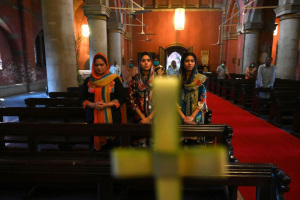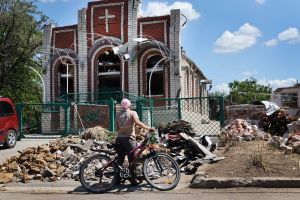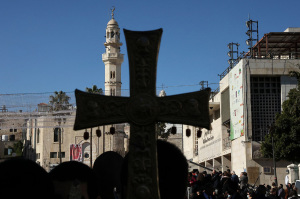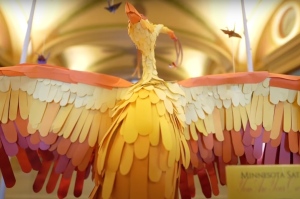Holy site where Jesus healed blind man will be opened to the public in Jerusalem

A historic biblical site believed to be where Jesus healed a blind man and Jewish pilgrims took ritual baths for purity will be fully excavated for the first time and opened to the general public.
The Israel Antiquities Authority, the Israel National Parks Authority and the City of David Foundation announced the initiation of the excavation of the Pool of Siloam in Jerusalem in a Tuesday announcement.
"The Pool of Siloam in the City of David National Park in Jerusalem is a site of historic, national, and international significance. After many years of expectation, we will soon begin uncovering this important site and make it accessible to the millions of visitors and tourists who visit Jerusalem every year," Jerusalem Mayor Moshe Lion said in a statement.
Visitors will be allowed to view the excavation of the historic site. Within a few months, tourists can access the entire pool, traveling in the footsteps of the pilgrims that purified themselves at the pool on their journey to the Holy Temple. The tourist route will begin at the southernmost point of the City of David and end at the Western Wall.
The pool was reportedly constructed 2,700 years ago, in the eighth century B.C., during the reign of King Hezekiah, who is credited with having "brought water to the city" in 2 Kings 20:20.
It served as a reservoir for collecting water from the Gihon Spring, delivering water to the city through an underground tunnel.
"Due to its importance, the Pool of Siloam was renovated and expanded in the late Second Temple period, some 2,000 years ago," the IAA's announcement reads.
"It is believed that at this time the pool served as a 'mikveh', a ritual bath, for the thousands of pilgrims who converged at the Pool of Siloam before ascending via the City of David to the Temple."
In John 9:1-7, the pool is mentioned as the site where Jesus healed a man born blind and restored his vision. The verse describes Jesus spitting on the ground, making mud with his saliva, and placing it on the man's eyes.
"'Go,' he told him, 'wash in the Pool of Siloam' (this word means 'Sent'). So the man went and washed, and came home seeing," the verse reads.
According to IAA's announcement, a group of British-American archaeologists uncovered some of the pool's steps in the 1890s, and British archaeologist Kathleen Kenyon excavated the Pool of Siloam inthe 1960s.
In 2004, the Jerusalem Gihon Water Company also discovered some of the pool's steps while doing infrastructure work.
Under the direction of archaeologists Prof. Ronny Reich and Eli Shukron, the IAA undertook an excavation of the site, exposing the pool's northern side and some of the eastern side. The IAA's recent excavation is the first time the entire pool will be exposed.
As The Christian Post reported, Shukron is involved in another archaeological discovery and translation of an inscription containing King Hezekiah's name. Shukron deciphered the tablet, discovered in 2007, alongside Prof. Gershon Galil, head of the Institute for Biblical Studies and Ancient History at Haifa University in Israel.
Shukron and archaeologist Reich found the fragment near a man-made pool in the Siloam tunnel, with Galil and Shukron spending a decade deciphering it. The inscription summarizes the first 17 years of Hezekiah's reign and his accomplishments, such as bringing water to the city through an underground tunnel.
"This is an extremely important discovery that changes [some basic assumptions of] research, since until today it was commonly accepted that the kings of Israel and Judah, unlike the kings of the ancient Middle East, did not make themselves royal inscriptions and monuments… to commemorate their achievements," Galil said.
The professor also asserted that the inscriptions "support the claim that scriptures in the Book of Kings are based on texts originating from chronicles and royal inscriptions and that the Bible reflects historical reality and not imagination."
Samantha Kamman is a reporter for The Christian Post. She can be reached at: samantha.kamman@christianpost.com. Follower her on Twitter: @Samantha_Kamman





























